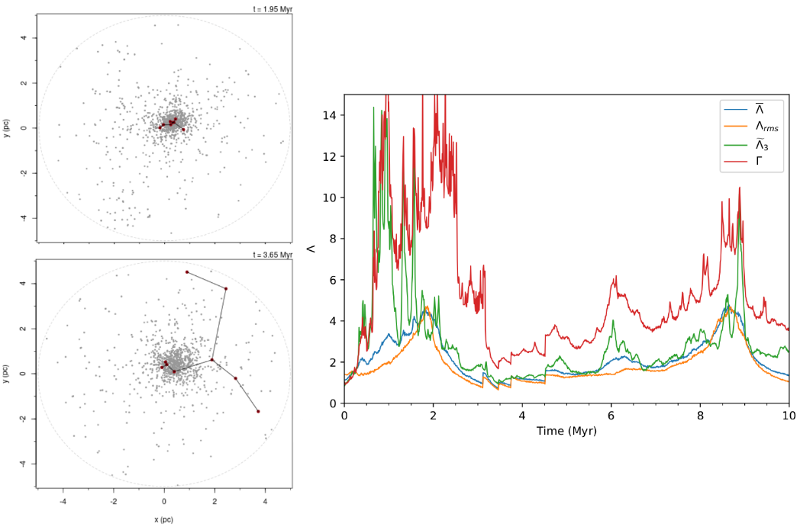| EPoS Contribution |
|
No evidence for primordial mass segregation
Claire Esau U Sheffield, Sheffield, UK | |||
| Primordial mass segregation is a test of massive star formation theory, being a signature of a competitive accretion-like scenario. I review observations of mass segregation in young clusters and compare these to results of N-body simulations of the first few Myr of dynamical cluster evolution. These models are run over a range of parameter space, with initial conditions covering the initial cluster structure, virial ratio, and fraction of stars in binary systems. I find that across these models all mass segregation signatures are better explained by dynamics, and argue that there is no good evidence for primordial mass segregation. | |||
 | |||
Caption:
Using minimum spanning trees (MSTs) to quantify mass segregation in simulated star clusters. The top left figure shows the distribution of the most massive stars at 1.95 Myr after cluster formation and the bottom left shows the distribution of the same massive stars at 3.65 Myr. Various measures of mass segregation using MSTs are presented in the right-hand plot. Dynamical mass segregation is shown to be quick and extreme, with the most significant signatures occurring between 1-2 Myr after formation, increasing again beyond 6 Myr.
| Collaborators: |
S. Goodwin, UoS, UK
Suggested Session:
Star formation "laws" and IMF | | |

